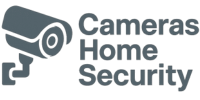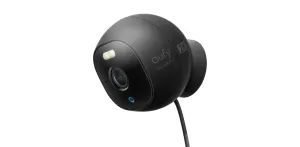Setting Up Your Peace of Mind: Where to Place Indoor Security Cameras
Let’s get real; deciding to install security cameras in your home feels a bit like trying to solve one of those puzzles where you match the shapes with the correct slots. It’s about amplifying security without turning your home into a cold, eye-in-the-sky surveillance hub. So, how do you blend safety, discretion, and functionality? We’ll walk through some of those puzzling placement decisions together.
Finding the Perfect Spots: The Entrances
If there’s anything my paranoid (but lovable) father taught me, it’s that every good security setup starts with covering the bases—the entrances. You want to keep tabs on who’s coming in and out of your home, right? Placing cameras above your front and back doors is a must. These are the primary gateways into your residence and the most common entry points for unwanted visitors.
Imagine this: last year, I got a ping on my phone that there was movement at the front door. Turns out, it was just a delivery person leaving a package that I had completely forgotten about! Without the camera, I might have left that package out overnight—easy pickings for porch pirates.
- Tip: Set the cameras out of reach, like above the door frame, and angle them to cover the approach towards your home, not just when someone is directly in front of the door. For even better targeted coverage, consider using bullet cameras to monitor specific entry points.
The Overlooked Hero: The Hallway
Considering that hallways are the veins of a home, connecting room to room, it's surprising they're often overlooked. A strategically placed camera here works like a charm. Why? Because it can capture movement along its entire length. (security.org)
There’s this time I caught my cat, Jerry, sprinting full-tilt down the hall after the mechanical mouse my nephew left running. Hilarious footage aside, seeing how seamlessly the camera captured the entire event made me confident in its placement for less entertaining and more nefarious scenarios.
- Tip: Ensure the camera has a clear line of sight down the length of the hallway. Any large decorations or mirrors might create blind spots. If you want a wide, panoramic view, you might explore getting the most out of your fisheye camera’s wide view.
Common Areas: Living Room, Kitchen, and Family Rooms
Ah, the family rooms, where the bulk of indoor life happens. Whether it's the kids playing, daily household operations, or just the general hustle and bustle, you want your camera to capture the essence of ‘family watch.’
Picking the right angle in these rooms can be tricky, though. You’ll want a broad view—enough to cover entry points and vulnerable windows. Plus, it was precisely here in my living room where my security camera recorded the first steps of my toddling niece, which not only melted our hearts but also emphasized the dual utility of these devices.
- Tip: Avoid pointing cameras directly at windows to prevent glare and backlighting from clouding the footage. Strategic placement can be crucial for clarity. If subtlety is key in shared areas, consider the discreet nature of turret security cameras.
Special Considerations: Privacy Areas
It's crucial to strike a balance between securing your home and respecting privacy. Areas like bathrooms or bedrooms are sensitive spots. I recommend minimizing cameras in such personal areas unless specific security reasons prompt it. If necessary, consider additional privacy measures, like scheduled recording times.
My sister had an incident where her laptop got stolen right out of her previously “secure” home office, which also doubled as her guest room. A discreetly placed camera inside could’ve been a game-changer in that situation.
- Tip: If cameras must be placed in private areas, clearly communicate their presence to household members and guests to maintain trust and respect for privacy.
Technology to the Rescue: Consider the Features
Guess what? It’s not just about where you place the cameras but also which cameras you use. With the progression of technology, options like motion detection, night vision, and even AI-driven activity zones become invaluable.
For instance, the camera in my garage uses motion detection to differentiate between a car pulling in and my neighbor’s cat sneaking in for a nap. This kind of smart differentiation can save you a heap of unnecessary stress (and notifications). If you're building a system from scratch, it's worth looking into IP security cameras as the modern surveillance standard.
- Tip: Leverage advanced features to enhance your security without additional hardware. Motion zones and alert settings are particularly useful. If you're looking for enhanced coverage and flexibility, controlling your PTZ camera remotely could be a game-changer.
Final Thoughts: Security Meets Lifestyle
Remember, installing security cameras is about enhancing your safety net in a way that meshes with your lifestyle. It’s not about watching every corner all the time but ensuring that you have the coverage where and when it matters most. And hey, capturing some of life’s little, unexpected moments—like your cat's midnight zoomies—is just an added bonus.
Getting the placement right might take some tweaking, so don't be afraid to adjust as you learn what works best for your space and needs. Start with the basics, use technology to fill in the gaps, and always keep the balance between security and privacy.
So go ahead, give those cameras a shot, and may your home be as safe as it is happy!





